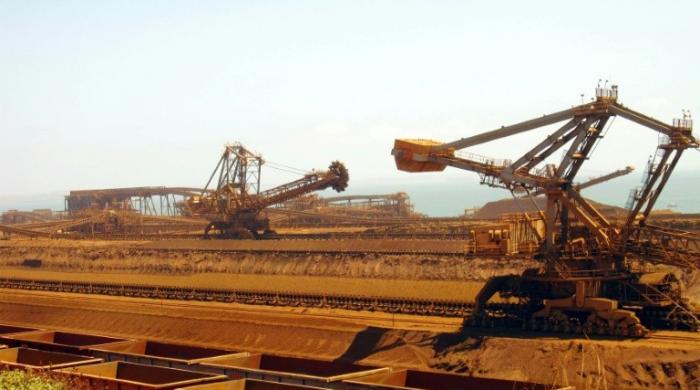Miners regain sparkle as commodity prices rebound
February 27, 2017

SYDNEY: Increased Chinese spending on housing and hopes of an infrastructure bonanza in the US and India are driving a recovery in resources giants, analysts said, with major miners raking in huge profits.
A slowdown in the global economy, particularly in the world's top consumer China, and a supply glut hammered prices in recent years, pushing many firms to the brink of collapse and forcing others to slash jobs and spending.
But with Beijing rediscovering its appetite for key metals -- and the economy showing signs of stabilising -- optimism is returning, although there are lingering worries the recovery might not last.
"Most miners are going to be making very good cash, and better cash than they have been making for years," UBS commodities analyst Daniel Morgan told AFP.
"Their cost bases are lower and in many cases they are back to sustaining capex (capital expenditure) rather than growing capex. So right now they'll be minting cash and improving their balance sheets."
Iron ore, a key ingredient in steelmaking, has been representative of the commodities rollercoaster.
After hitting a peak near US$200 a tonne in 2011, it tumbled some 80 percent to below US$40 in late 2015. Since then, it has rallied to spike above US$90 in February, surprising analysts.
Copper prices have also rallied, with a strike at BHP's Escondida mine in Chile -- the world's biggest copper pit -- also providing support.
The main factors behind the broad-based revival have been supply constraints and a shift in Chinese demand, said CLSA's head of resources research Andrew Driscoll.
Chinese authorities introduced policies supporting the nation's crucial property market while also increasing credit, helping drive infrastructure investment.
"Demand was persistently better than what was expected, led by those two sub-sectors, for much of the year," Driscoll told AFP.
At the same time, supply constraints emerged as the central government enacted environmental reforms that made it more costly to produce polluting commodities in China.
The November election of President Donald Trump, who has touted massive infrastructure spending, and the Indian government's vow to fund the modernisation of roads, airports and railways also boosted sentiment.
Back in business
The world's two biggest miners -- BHP Billiton and Rio Tinto -- this month reported bumper profits for 2016 after plunging into the red the previous year and Brazil's Vale also said Thursday it experienced a strong earnings boost on the back of record production.
Coal giant Anglo American joined the party Tuesday, powering back into the black, while the surge in coal prices has led to the reopening of mines by operators including Swiss commodities giant Glencore.
US-listed coal miners such as Alpha Natural Resources and Arch Coal are also returning after a slew of bankruptcies.
Warrior Met Coal, which owns bankrupt Walter Energy's main assets, is hiring workers while Peabody Energy has plans to relist sometime this year.
"That's an interesting example of how things have gone full circle. We've come out at the other end, these companies have been restructured and it's a much stronger coal-price environment," Driscoll said.
"They... are likely to become significant companies again."
Shareholders could benefit from share buybacks as miners become awash with cash, while mergers and acquisitions could return.
But companies would be wary of embarking on a spending spree that might backfire if prices plunge again, with experts questioning whether the current commodities rally is sustainable and if prices will head south in case supply starts to outstrip demand.
Some commodities such as coal already face a longer-term decline owing to competition from cheap natural gas and a push for cleaner energy.
But the key factor that could prove crucial is the US dollar, in which commodities are priced.
With Trump's big-spending, tax-cutting plan expected to ramp up inflation, the Federal Reserve will likely be forced to hike borrowing costs, fuelling demand for the greenback.
A stronger dollar makes resources more expensive for those holding other currencies.
A stronger US dollar is "probably the overall headwind that will keep commodity prices from doing very well", Fat Prophets resources analyst David Lennox told AFP.
"We've probably seen the crazy numbers from their lows, and we'll now get the structured price movements as markets start to react... and supply gets going."











